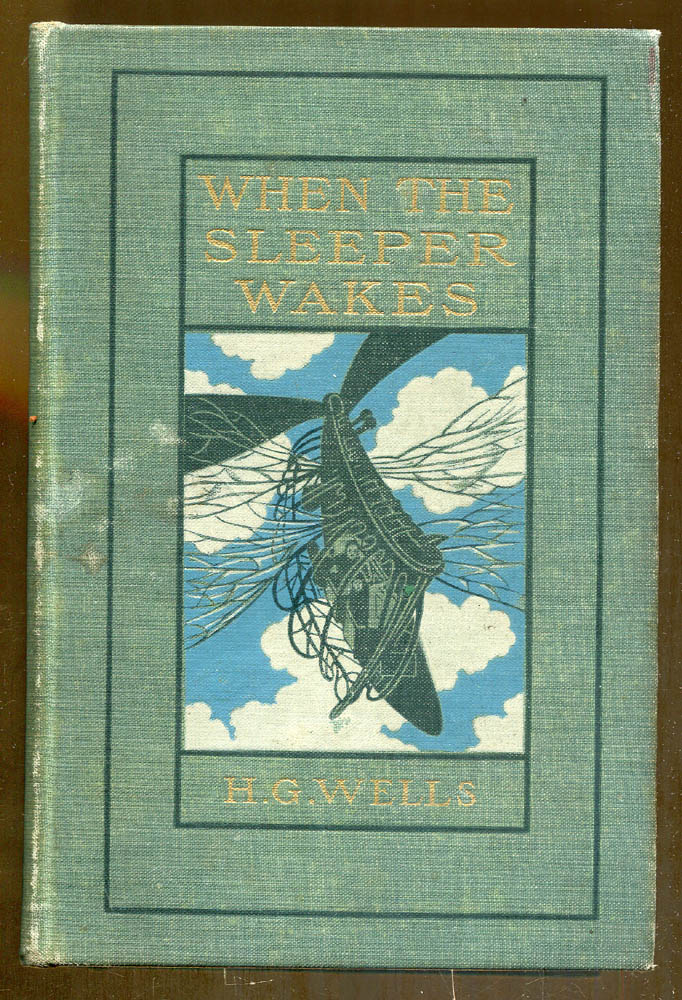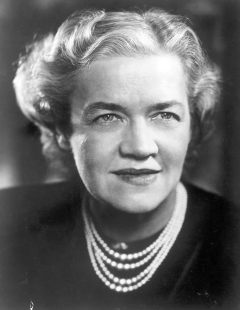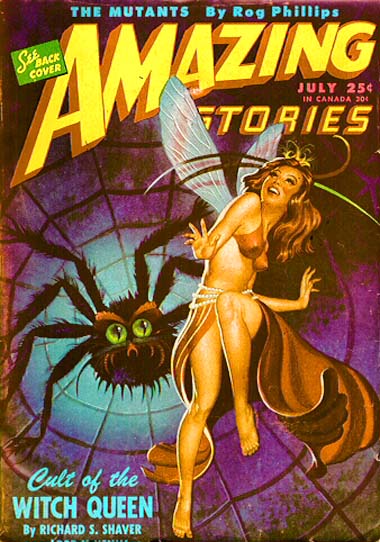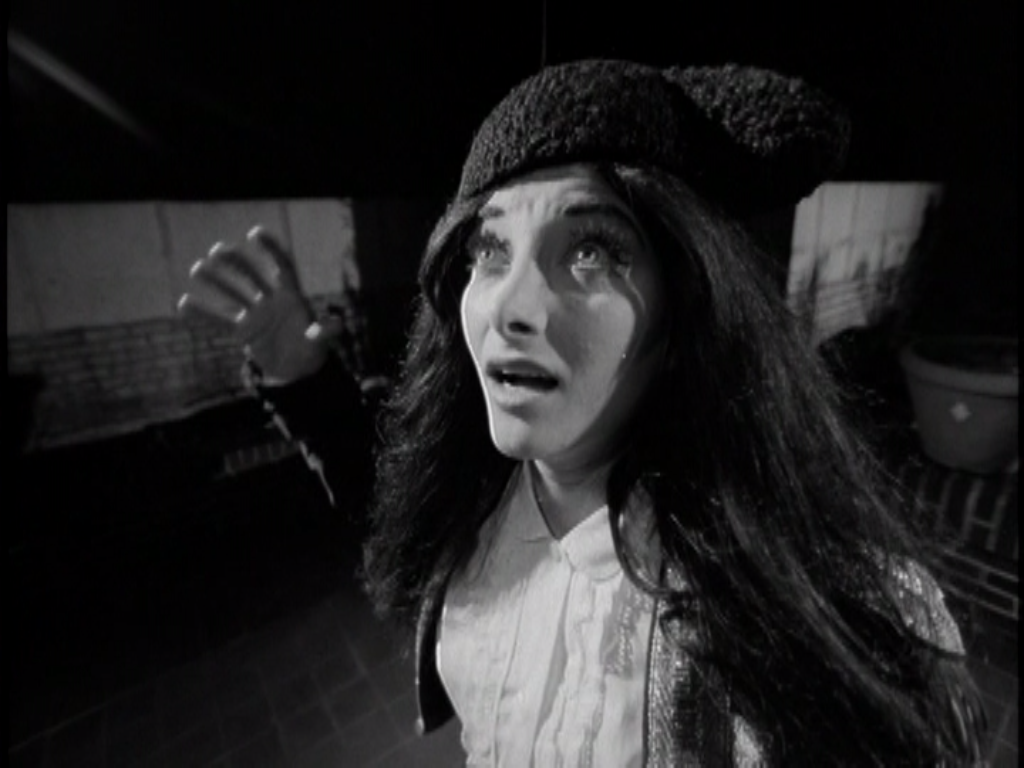
by Victoria Silverwolf
Do Not Go Gentle Into That Good Night
These are dark days.
I need not remind you of the recent shocking murder of a genuinely great man who dedicated his life to nonviolence. Nor is it necessary to mention the wholesale slaughter of soldiers and civilians in Southeast Asia, which shows no signs of abating.
As if the heavens wish to mourn for the horrors humanity unleashes upon itself, there will be a total eclipse of the Moon tonight, visible from almost all parts of the Western Hemisphere.

An visual depiction of the phenomenon.
It is tragically appropriate that light reflected from Earth makes the eclipsed Moon appear reddish; an event known as a Blood Moon.
Even in the frivolous world of popular music, we are reminded of tragedy. At the top of the American music charts is the melancholy ballad (Sittin' On) The Dock of the Bay by the late Otis Redding, who died in a plane crash last December. It holds the unhappy distinction of being the first posthumous single to reach Number One.

Recorded just three days before Redding's death.
Better to Light One Candle Than to Curse the Darkness
It is tempting to sink into silence and depression. Instead, let us take what comfort we can from small pleasures. One such anodyne, at least for me, is reading science fiction and fantasy. Let's take a look at the latest issue of Fantastic and see if we can draw any solace from it.

Cover art by Johnny Bruck.
As has happened a few times before, the image on the cover comes from an issue of the popular German magazine Perry Rhodan.

That seems to mean The Little Men from Siga, presumably a fictional planet.
High Road to the East, by Christopher Anvil

Illustration by Gray Morrow.
In this trivial bagatelle an Admiral (clearly supposed to be Christopher Columbus) has a scheme to sail west from Europe to the Indies without bumping into the new continent in the way. He uses gunpowder to send his ship into the air.
Can you guess this won't work out the way he thinks?
This is a weak joke, hardly the outstanding new story promised on the cover. At least it's short and inoffensive.
Two stars.
The Little Creeps, by Walter M. Miller, Jr.
The December 1951 issue of Amazing Stories is the source of this tale of the Cold War turned Hot.

Cover art by Robert Gibson Jones.
We start off with an odd scene in which a huge number of tiny glowing things invade the Tokyo home of an American General at night. Only light drives them away. They manage to talk to the officer by invading his phonograph and manipulating the needle. These are, of course, the Little Creeps.

Illustration by Leo Summers.
China and the USA are in a shooting war. The Soviet Union is supposedly neutral, but gives aid to its Red ally. The Little Creeps tell the General not to do three things.
1. Don't fire a Japanese servant.
2. Don't listen to a visiting General from the front lines.
3. Don't bomb Chinese installations along a river that serves as the border with the USSR.
You can probably predict that the General doesn't listen to the annoying Little Creeps, and things go from bad to worse.
This is a strange story, with a strong antiwar message mixed up with bizarre science fiction content. The latter never really made sense to me.
The visiting General is a loathsome character indeed. Not only does he love war, he also endlessly harasses a WAC Sergeant. I understand that he's the story's villain, but he really gives me the creeps (if you'll excuse the expression.)
Very mixed feelings about this one. The author has his heart in the right place, and the escalating tension of the situation creates a great deal of suspense, but the Little Creeps are kind of goofy.
Three Stars.
Dr. Immortelle, by Kathleen Ludwick
From the Fall 1930 issue of Amazing Stories Quarterly we have the only story, as far as I can tell, this author ever published. I managed to take a look at a copy of the yellowing pages of the old magazine, and the table of contents lists her name as Luckwick. The introduction to the story refers to her as Miss Ludwick. I don't know which one is correct.

Cover art by Leo Morey.
Anyway, this is a horror story about a Mad Scientist who discovered a way to extend his life way back in the 18th century. (Did the title give you a clue?)

Illustration also by Morey.
He and his mulatto slave have kept themselves alive and young by transfusing the blood of children into their bodies. Even more improbable, and embarrassing for the modern reader, the transfusion of blood from white children has made the mulatto completely Caucasian!
Sometimes the children don't survive the sinister procedure. Justice finally catches up with the evil scientist and his servant (who developed a conscience about what they were doing over the decades) in the form of the grown sister of a little boy who died because of the transfusion.
It's easy to tell this yarn is nearly four decades old. Besides the stuff about the mulatto turning white, there's a lot of flowery language. The author uses a narrative technique I've seen in other antique works. We start with a narrator, who then quotes at length from another narrator. (In this case, the dying servant.)
Thirty-odd years ago, this could have been very loosely adapted into a cheap Boris Karloff movie, of the kind I eagerly seek out on Shock Theater. In print form, the years have not been kind to it. Whatever became of Miss Ludwick/Luckwick, she does not appear to have been a major loss to the literary world.
Two stars.
Spawn of Darkness, by Craig Browning
Never heard of Craig Browning? That's because he's really Rog Phillips, who gave us this story in the May 1950 issue of Fantastic Adventures.

Cover art by H. L. Blumenfeld.
Guess what? Gregg Conrad, whose name appears on the cover, is also Rog Phillips! The guy gets around!

Illustration by Edmond Swiatek.
In a future war, two death rays meet, causing an entity to appear out of nowhere. It takes the form imagined by a soldier; namely, a genie.
Forget the futuristic stuff. From this point on, we've just got a story about a guy and his genie. He might as well have found it in an old bottle in the desert.
Anyway, he wishes his way home. Things seem fine, but then the military sends his mother a telegram, stating that her son is missing in action and presumed dead. I guess the mother is pretty superstitious, because a self-proclaimed psychic convinces her the young man is a ghost. Complications ensue when the guy rather foolishly uses the genie to perform practical jokes that seem like the work of a poltergeist.
I don't know what to make of this thing. As I've indicated, the science fiction content is pointless. I guess the author is making fun of parapsychologists and such, but nothing particularly funny happens.
Two stars.
Spartan Planet (Part Two of Two), by A. Bertram Chandler

Illustration by Jeff Jones.
Let's recap. Chandler's series character John Grimes, a female ethologist, and a bunch of other folks have arrived on a planet without women, as far as the bulk of the population knows. The elite Doctors actually have a secret cache of women hidden away.
Our protagonist is a military police officer native to the planet. He becomes a secret agent for the head of Intelligence, assigned to keep an eye on the new arrivals while also investigating the Doctors.
In this installment, the officer finds himself strangely attracted to the ethologist, although he thinks of her as an alien. On a tour of the planet, they come across the place where girl babies (considered to be deformed) are left to be eaten by predators. Of course, the ethologist rescues the sole surviving infant.
Meanwhile, another woman from Grimes' spaceship is raped (blessedly, this is obliquely described) by a gang of locals. The implication is that men who have no idea that women exist, and who imagine the strange visitors to be bizarre creatures of another species, are irresistibly drawn to them.
Eventually, there's a huge mob of men trying to get at the women hidden by the Doctors. After the battle, Grimes offers a long speech explaining how the planet developed its unique society.
As you can see, this half of the novel is a lot darker in mood and a lot more violent than the first half. After plenty of action, Grimes' expository speech slows things down quite a bit. Overall, I didn't mind reading it once, though this segment is somewhat distasteful.
Three stars.
Something for the Woman, by Ivar Jorgensen
As you may know, Ivar Jorgensen is a name used by a whole bunch of different writers in various science fiction and fantasy books and magazines. In this case, my research tells me it's really Randall Garrett hiding behind the name, in the March/April 1953 issue of Fantastic.

Cover art by Richard Powers.
A family (Mom, Dad, and two little kids) go through the process of selling everything they own except the clothes on their backs and a few other small items. They're going on a long, long journey.

Illustration by Ed Emshwiller, often known as Emsh.
The story mostly deals with the woman's fear of leaving home for the unknown. A small gesture from her husband makes the impending voyage less terrifying.
I think I like this story more than it deserves. Yes, it supports the stereotype that women are timid creatures. (There's reference to a few rare women who are as eager for adventure as men.) But it's sensitively written, and it was a welcome novelty to read something that was unashamedly sentimental.
Four stars.
Brave Nude World, by Forrest J. Ackerman
A hint in the introduction to this reprinted article led me to track down the publication where it originally appeared. I hope you appreciate the effort and embarrassment it took to secure a copy of an old nudist magazine. Namely, the August 1961 issue of American Sunbather.

I have cut off the lower half of the cover, which features the young lady with the big smile completely unclad, in order to spare the delicate sensitivities of any Journeyers who might be offended.
Big Name Fan Ackerman chatters away about his experience of nudism, while also mentioning a few science fiction stories that deal with the topic. Notably, the original magazine featured drawings by another well-known fan, Betty JoAnne Trimble, universally known as Bjo.

Ackerman claims this is the title of a story by Spencer Strong (Ackerman himself), but I can find no reference to it. Maybe it appeared in a fanzine.

On the other hand, this is a famous story by Robert A. Heinlein. (Galaxy, March 1952.)
 This tale appeared in the December 1956 issue of the girlie magazine Caper, attributed to Spencer Strong (Ackerman again) and Morgan Ives (Marion Zimmer Bradley.)
This tale appeared in the December 1956 issue of the girlie magazine Caper, attributed to Spencer Strong (Ackerman again) and Morgan Ives (Marion Zimmer Bradley.)
The author indulges his love of puns throughout. There's not really any point to this look at nudism in science fiction. It's kind of like Sam Moskowitz without the scholarship. Too bad Fantastic didn't reprint Bjo's cute cartoons, so I had to dig them out for you.
Two stars.
A Portfolio: H. G. Wells' When the Sleeper Wakes, by Anonymous
The magazine fills up a few pages with illustrations from the Winter 1928 issue of Amazing Stories Quarterly, which reprinted the famous novel in full.

Cover art by Frank R. Paul.
The drawings were themselves reprinted from the 1899 hardcover edition.

Cover art by . . . indulge me a while as I explain how I solved a mystery.

The introduction in Fantastic says the artist's identity was lost.

In fact, it says that even Amazing Stories Quarterly didn't know the artist's name.

I'm not sure I believe that. Maybe the magazine just didn't bother to give credit where credit was due.

Fantastic just attributes them to an English artist.

In fact, my research revealed that the artist was actually French, a fellow named Henri Lanos who often illustrated scientific romances.
Nice drawings, and the enigma of the artist's identity piqued my curiosity.
Three stars.
Fantasy Books, by Fritz Leiber
The master of sword and sorcery reviews books of that kind (Conan and King Kull) by Robert E. Howard, with much additional material by Lin Carter and L. Sprague de Camp. Leiber doesn't talk much about the two modern authors, and generally praises Howard while pointing out his poorest stories and offering an example of his worst prose.
No rating.
Light at the End of the Tunnel?
This issue offers only mild diversion from the terrors of the real world. Most of the stories were poor to mediocre, with only Jorgensen/Garrett rising a bit above that level. Maybe that's enough for now.

![[April 12, 1968] Darkness (May 1968 <i>Fantastic</i>)](https://galacticjourney.org/wp-content/uploads/2023/04/SMALLCOVER-672x372.jpg)

![[February 10, 1968] It's a Man's World (March 1968 <i>Fantastic</i>)](https://galacticjourney.org/wp-content/uploads/2023/02/cover-2-672x372.jpg)
























![[February 6, 1968] The Most Dangerous Dame (<i>Confessions of a Psycho Cat</i>) and From the Land of Hype (Ellison's <i>From the Land of fear</i>)](https://galacticjourney.org/wp-content/uploads/2023/02/680206covers-672x372.jpg)
















![[January 10, 1968] Saving the Best For Last (<i>Dangerous Visions</i>, Part Three)](https://galacticjourney.org/wp-content/uploads/2022/10/1967_Dangerous-Visions-hc-672x372.jpg)

![[December 10, 1967] Give 'Em Hell, Harry! (January 1968 <i>Fantastic</i>)](https://galacticjourney.org/wp-content/uploads/2022/11/COVER-ART-3-672x372.jpg)

















![[December 6, 1967] Brotherly Love (<i>Dangerous Visions</i>, Part Two)](https://galacticjourney.org/wp-content/uploads/2022/11/DangerousVisions1stEdxx971656156_465_692_int-2.jpg)

![[October 10, 1967] Jack the Ripper and Company (<i>Dangerous Visions</i>,Part One)](https://galacticjourney.org/wp-content/uploads/2022/10/1967_Dangerous-Visions-hc-2-672x372.jpg)

![[October 8, 1967] Things Fall Apart (November 1967 <i>Fantastic</i>)](https://galacticjourney.org/wp-content/uploads/2022/09/Fantastic_v17n02_1967-11_0000-3-672x372.jpg)























![[September 12, 1967] Heavens Above! (<i>The Fifteenth Pelican</i> and <i>The Flying Nun</i>)](https://galacticjourney.org/wp-content/uploads/2022/08/sddefault-2-619x372.jpg)









![[September 10, 1967] Women's liberation! (September 1967 Galactoscope)](https://galacticjourney.org/wp-content/uploads/2022/09/670910featured-672x372.jpg)







